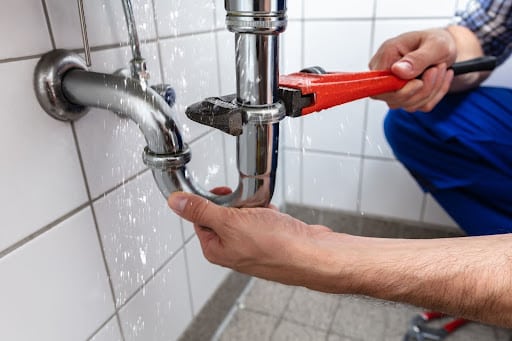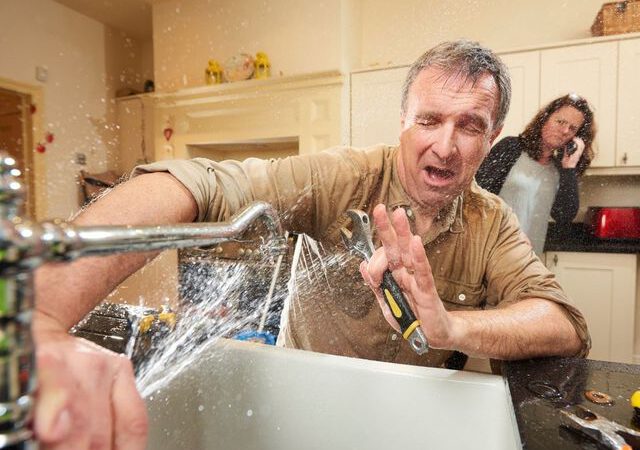How to Get Rid of Clogged Drains

Clogged drains are frustrating, but cleaning your pipes regularly prevents them from becoming a serious problem. Regularly pouring boiling water down your sink drains can wash away or break up organic debris that could build up and form a clog. You can unclog a drain with DIY methods or purchase a chemical cleaner. This article will compare drain cleaners to determine the best for your clogged drains.
Baking soda and white vinegar
A clogged drain can be a major hassle, especially in your kitchen where food is prepared and dishes are washed. Fortunately, you can keep your drains clean by using baking soda and white vinegar. This combination is a budget-friendly and environmentally-friendly alternative to commercial foaming drain cleaners. This Drain Cleaning Sarasota FL solution creates a chemical reaction that eats away at the gunky buildup and leaves your pipes smelling fresh.
You can easily make this homemade cleaning solution with ingredients that you probably have in your kitchen cupboards or pantry. The acidity in vinegar breaks down greasy residues from soap and shampoo, while the bubbling action of baking soda loosens any materials that are blocking sections of your drain. It also works as an effective deodorizer, unlike many store-bought chemicals that can be toxic to your family and pets.
To use this simple drain cleaning hack, first pour a half cup of baking soda into the drain. Then, pour a half cup of white vinegar into the same drain at the same time. This ratio is important to ensure the chemical reaction starts at once, which should cause a lot of foaming to occur. Cover or plug the drain, and let the solution sit for fifteen to twenty minutes. After the mixture has sat, run a kettle of boiling water down the drain to flush it and remove any remaining baking soda and vinegar.
For stubborn clogs, repeat the process a few times until the gunk is gone. If this does not work, you may need to call a plumber for more serious blockages.
You can also substitute lemon juice for vinegar to prepare a drain-cleaning solution. Lemons contain citric acid, which is a viable alternative to acetic acid in vinegar. Alternatively, you can use cream of tartar, which contains a similar compound to acetic acid. This ingredient is also a great drain cleaner, but it may not work as well on certain types of gunky debris. If you have a particularly stubborn clog, try to use this method after you’ve already used a stronger chemical drain cleaner.
Plastic drain cleaning tools
There are a variety of plastic drain cleaning tools on the market that can help you tackle any type of drain clog. Most are easy to use and relatively inexpensive. They’re also better for the environment than liquid drain cleaners, which contain ingredients that can be harmful to pipes. Some are even toxic to children and pets if they get into contact with them. To avoid injury while using any type of plastic drain cleaner, always follow the instructions and make sure to wear protective gear.
Liquid drain cleaners, such as Drano and Liquid Plumber, are effective at removing grime and grease from a drain, but they can also be hazardous to pipes if used incorrectly. They often contain caustic materials that can burn skin and irritate eyes and lungs when inhaled. In addition, these chemicals can create dangerous fumes if they come into contact with other substances, such as metal. They also may damage plastic pipes by weakening or melting them.
If you’re looking for a safer alternative to chemical drain cleaners, look for enzymatic biological products. These cleaners break down stuck material into smaller particles, which bacteria then digest. They’re especially effective at targeting hair and soap scum, but they may not be as fast-acting as chemical cleaners.
These products are generally less expensive than liquid drain cleaners and can be used over again. The Cobra 00112BL drain cleaning tool, for example, is designed to be used on sinks and toilets and includes flexible plastic barbs that can latch onto hair and other debris. This tool is easy to use and can be rinsed off for repeated use.
Another good option is the EZ-Clog Wrench, which can be used on a wide range of sinks and bathtubs. It’s simple to use and has a long reach, so it can get past obstructions that might otherwise require professional assistance. It can also be purchased in a kit with other drain-cleaning tools.
Galvanized steel pipes are usually covered in a layer of zinc, which protects the steel from corrosion. However, this zinc coating can deteriorate over time, leaving behind deposits of sediment that can clog the drains. These drain cleaners dissolve the accumulated sediment and restore the flow of water.
Sink auger
You’ve tried a coat hanger, a plunger, and even some chemical drain cleaner—but your sink still isn’t unclogged. When all else fails, it’s time to call in the big guns – the drain auger. Though a bit intimidating, this simple tool can easily clear even the most stubborn clogs. You can purchase one for relatively little money or rent it from most home improvement stores.
The basic function of the drain snake or auger is similar to a drill; both have a drum that houses anywhere from a few feet of cable to 100 feet in some bigger models. The operator feeds the end of the cable into the clogged pipe, turning the handle to either punch through the clog and loosen it or grab onto the clog to pull it out. You can find hand crank, plug-in, and cordless versions.
First, prepare the area by wearing rubber gloves (leather is best because latex can get caught on the cable) and removing the P-trap arm if necessary. This will give you the best access to the drainpipe and allow you to see what’s blocking it.
Next, feed the auger into the drain slowly while turning the handle. When you feel resistance, you’ve reached the clog. The auger will then cling to the clog and you can slowly pull both it and the clog out of the pipe.
You’ll need to repeat the process if the clog is still there, but you should be able to clear it eventually. Once it’s gone, be sure to clean the snake itself and let it dry before storing it. Also, be sure to always use a snake on a clean pipe, as bacteria-laden hair and debris can get stuck on the coils of the cable and rust it.
If the clog is too severe for your auger, remove the trap arm and call in a plumber or rooter service. Ideally, you’ll have a drain snake on hand to avoid this issue altogether. It’s a small investment that pays for itself after just one use. Just be sure to thoroughly wash the snake afterward to prevent contamination from bacteria and other toxins.
Acid drain cleaners
Acid drain cleaners, also known as muriatic acid, are one of the most popular options for clearing a blocked drain. They work by attacking the organic material that is causing the clog, breaking it down into water-soluble compounds that can be flushed away. These products are readily available in most retail stores under brand names such as Kleen-Out and Clean Shot. They are highly concentrated, so it is important to follow the instructions on the label and take proper safety precautions when using them.
Base drain cleaners are another common choice for removing a blockage. These products are generally less toxic than acid-based cleaners and are able to dissolve most types of organic matter, such as hair, grease and soap scum. However, they can still cause corrosion in pipes and should be used with caution.
Many chemical drain cleaners give off noxious fumes that can irritate your nose and throat and aggravate respiratory conditions. Additionally, they can be harmful if they come into contact with your skin or eyes. They can also corrode older pipes and lead to more expensive repairs.
Using a homemade solution of hot water and dish soap is a good alternative to chemical drain cleaners. These cleaners are safe for your plumbing and the environment, and they can be just as effective. In addition, they do not leave a residue that can build up over time and cause clogs.
A reusable metal strainer can also prevent the need for chemical drain cleaners. This simple tool is a great way to catch large soap scum chunks, food debris and other items that could cause clogs. It is easy to install and can be a great addition to your kitchen or bathroom.
A plumber’s snake is another option for unblocking a drain without the need for chemicals. This device consists of a long piece of metal with a coiled wire at the end, which you can slip down the drain to break up and remove the clog. It is also important to regularly check your drains for clogs and to clean them as needed.




